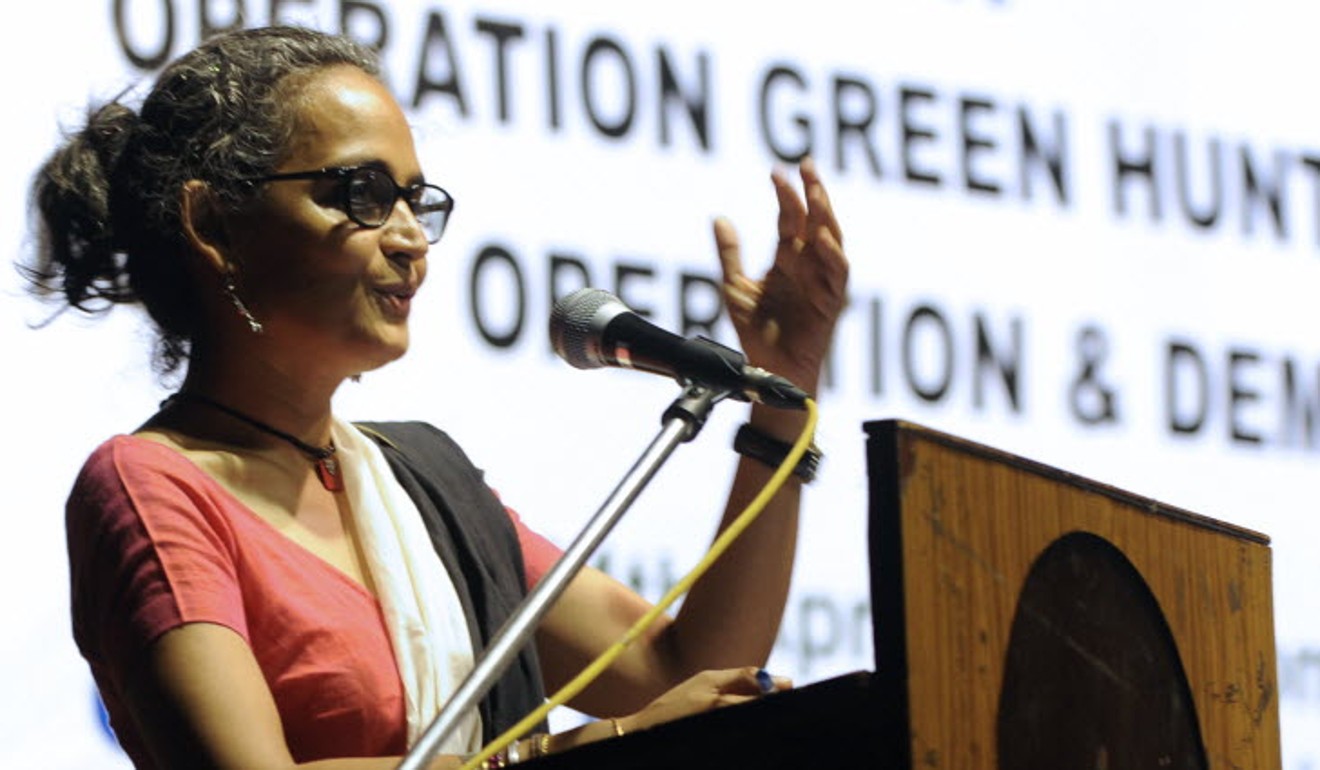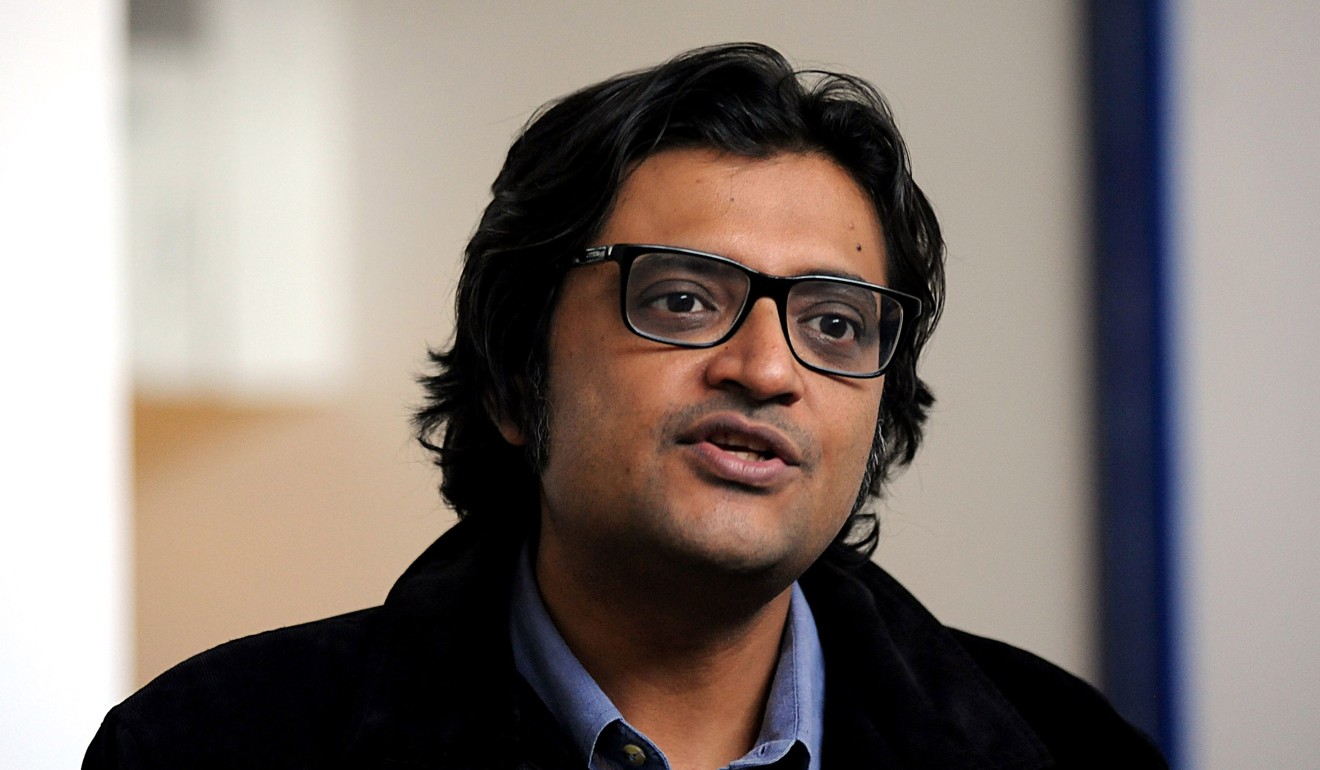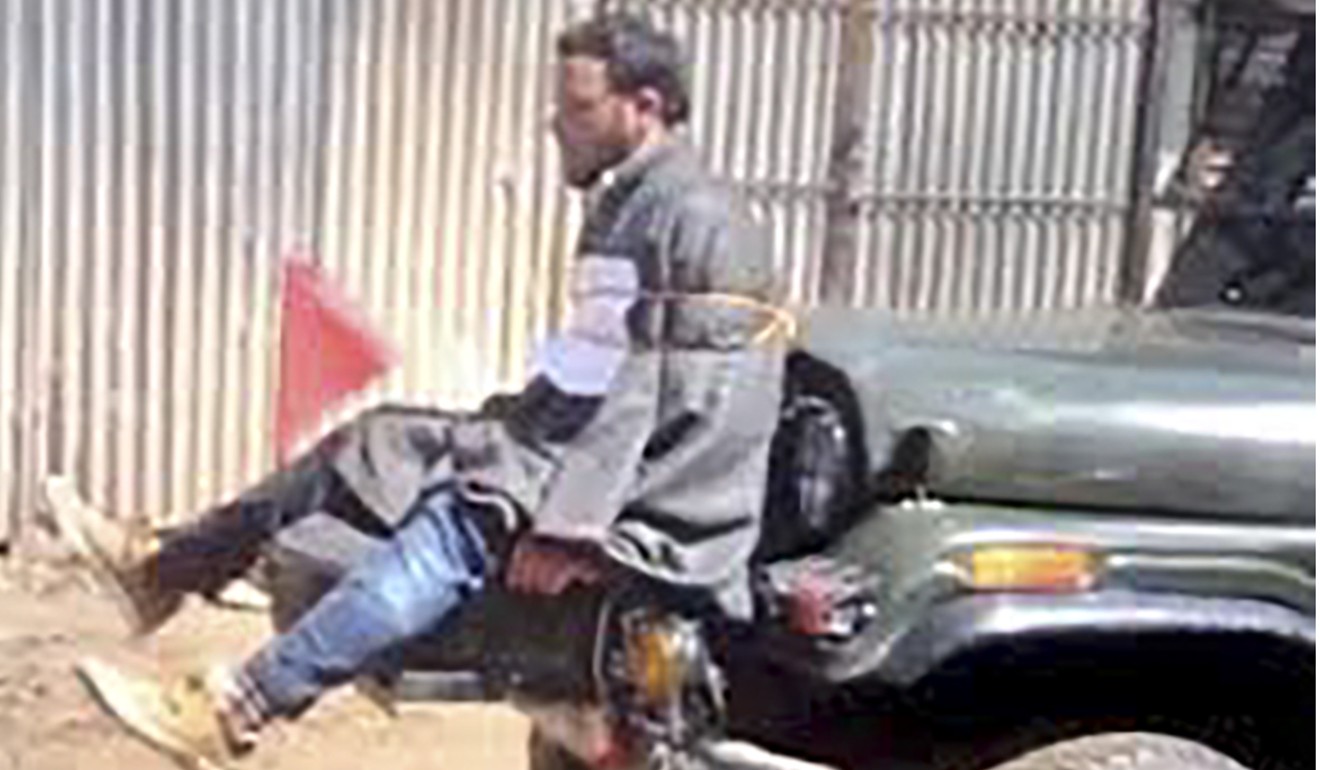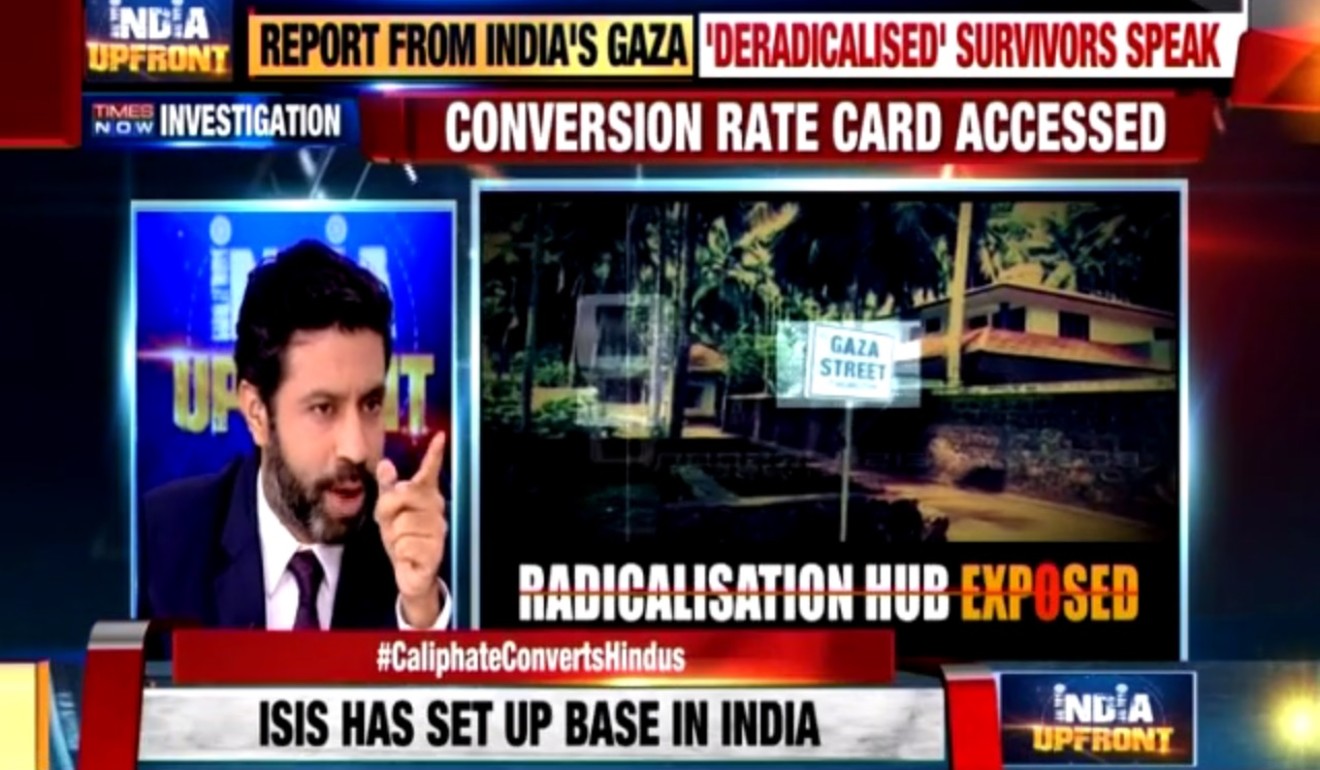
How fake news is fuelling India’s nationalism
Pro-government websites in India circulated a story in May saying Arundhati Roy, the renowned Indian novelist, had criticised the army’s heavy-handed presence in Kashmir, the disputed territory that is also claimed by Pakistan.
India would never gain full control of Kashmir, Roy was quoted as saying, “even if its army deployment increases from 7 lakh to 70 lakh”, numbers equalling 700,000 to 7 million.

Indian news media ran the story. Arnab Goswami, the main anchor on a news channel owned by a politician from India’s governing Bharatiya Janata Party, denounced Roy, author of the 1997 bestseller The God of Small Things and an outspoken government critic, as “anti-national” and a “one-book whiner wonder”.
One BJP lawmaker suggested Roy be tied to the bonnet of an army jeep, like a Kashmiri civilian was in an infamous incident earlier this year – video of which went viral, sparking protests in the disputed territory.

There was, however, one major problem: Roy did not make the comments.
The original source of the report was a Pakistani nationalist site called Times of Islamabad that said Roy – whose name it misspelled as “Rai” – spoke during a visit to Srinagar, capital of Jammu and Kashmir state.
Roy later clarified that she had not visited Srinagar and made no such comments. But by then she had already become the latest victim of India’s swirling epidemic of fake news.

Many fake stories go viral because they advance the Hindu nationalist agenda of the popular prime minister, Narendra Modi, and promote Islamophobia.
“No single party or ideology has a monopoly on fake news in India, but it’s certainly true that in many prominent cases stories that were later debunked took a pro-BJP line,” said Sadanand Dhume, an Asian subcontinent expert and fellow at the American Enterprise Institute in Washington.
The Times Now news channel in June reported on “rate cards” being circulated in the southern state of Kerala that offered cash rewards of up to US$10,000 for converting Hindus to Islam.

The anchor, Rahul Shivshankar, said the rewards system was the work of Islamic State, which had set up “a base in India”.
Alt News, a website that aims to debunk fake news, found that the report was based on a doctored image that had been circulating on propaganda websites and WhatsApp since 2010.
Times Now stood by its report, saying that critics had “mischievously focused on a peripheral aspect of the story” and that it was trying “to determine [the cards’] origins.”

According to Indian officials, there are no signs that the extremist group has set up a foothold in India. Some commentators accused the channel of fanning anti-Muslim sentiment with shoddy journalism.
“Much of the mainstream media lacks the skills, resources and public trust to debunk fake news,” Dhume said. “Moreover, increasingly even mainline media outlets – including TV news channels with significant viewership – are willing to peddle half-baked rumours as fact.”
Outlets critical of the government could face repercussions.

In June, government investigators raided the offices and houses of the founder of NDTV, widely seen as India’s most independent broadcaster, in connection with allegations that he defrauded a private bank, a highly unusual move that advocacy groups said was an attempt to muzzle free speech.
Modi prides himself on his social media presence.
But his official account follows some Twitter users who are blamed for spreading fake news, and his government has been caught peddling half-baked information.
In 2015, the government press office tweeted a clumsily altered image showing Modi surveying flood damage. This year the Home Affairs Ministry published a photo of floodlights it had installed along India’s border – but the picture was determined by Alt News to be an image of the Spanish-Moroccan frontier.
“In the ruling party, it’s not clear that using faked photos or citing dodgy websites will set back your career,” Dhume said. “It may even advance it.”

